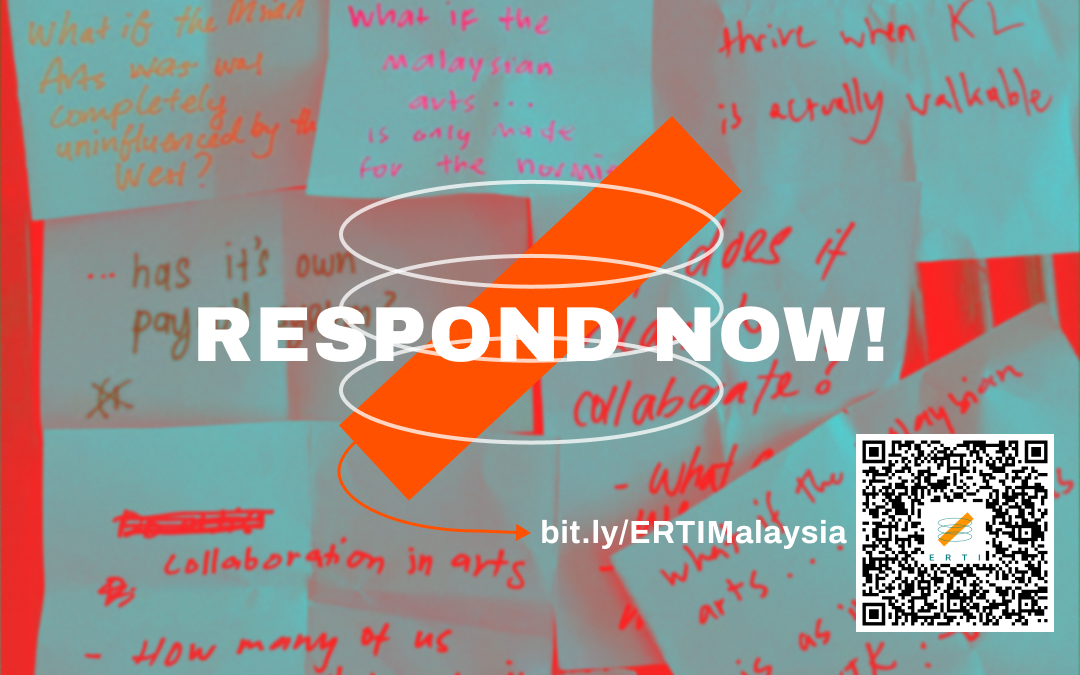Newsroom
ERTI Research Collective Unveils A New Initiative for Southeast Asian Performing Arts
Published on 13/08/2025

A New Initiative:"Embracing Shared Heritage Through Performing Arts," is set to deepen cultural connectivity across Southeast Asia. This project, a collaboration with UNESCO Jakarta and Temasek Foundation, aims to foster artistic collaboration grounded in the region's shared heritage, beginning with Malaysia, Singapore, and Indonesia. This initiative is being spearheaded by ERTI Research Collective, a Southeast Asia-based research consultancy that blends expertise in arts, law, and policy to deliver strategic insights on the creative economy. ERTI's work goes beyond surface-level analysis, connecting the dots between culture, governance, and strategy to help clients navigate change and lead with purpose.
The initiative's core mission is to build stronger ties between artists, institutions, and cultural organisations across borders, encouraging intercultural understanding and enabling new creative partnerships. While artistic exchange has a long history in the region, this program represents a deliberate commitment to strengthening these ties through a structured, inclusive, and future-facing approach. The involvement of UNESCO Jakarta, with its focus on safeguarding intangible cultural heritage, and the Temasek Foundation, which emphasises people-to-people connectivity, makes this collaboration particularly impactful. The program also places a special emphasis on long-term capacity building in arts management and arts education, two often-overlooked pillars essential for sustaining performing arts ecosystems across the region.
CloudJoi is delighted to be part of this impactful initiative with the ERTI Research Collective. As part of this effort, we invite art practitioners in Malaysia to complete the survey and contribute to the initiative. CloudJoi also had the opportunity to interview members of ERTI — read the full interview below to learn more.
Q 1: What is the core mission behind the "Embracing Shared Heritage Through Performing Arts" initiative, and what makes this collaboration with UNESCO Jakarta and Temasek Foundation particularly impactful?
The initiative's core mission is to deepen cultural connectivity across Southeast Asia by fostering collaboration grounded in our shared artistic heritage. It seeks to build stronger ties between artists, institutions, and cultural organisations across borders. This collaboration with UNESCO Jakarta and Temasek Foundation is particularly impactful because their involvement reflects the growing leadership of Southeast Asia in shaping global cultural conversations. With UNESCO's focus on safeguarding intangible cultural heritage and Temasek Foundation's emphasis on people-to-people connectivity, the initiative is designed to be both artist-driven and institutionally grounded.
Q 2: Why is completing the "Survey Form on Southeast Asian Performing Arts Culture" so crucial for practitioners and organisations, and how will their direct input help shape the future opportunities created by this initiative?
The survey serves as a baseline study to map the diversity of practitioners and organisations across the performing arts sector in Southeast Asia. By gathering insights directly from those working in the field, the survey supports a more grounded, nuanced understanding of where collaboration is already happening, where gaps exist, and what opportunities could be cultivated. This process is crucial because it will help lay the groundwork for long-term collaborative and educational pathways between Southeast Asian performing arts practitioners. The data gathered may evolve into a living, accessible database that reflects the ecosystem of performing arts and its educational practices across the region. However, this can only happen if practitioners themselves contribute their professional data, ensuring the initiative is shaped by those it seeks to support.
Q 3: What are the biggest challenges and most significant opportunities you foresee in fostering genuine cross-border artistic collaborations within the Southeast Asian performing arts landscape, especially when it comes to effectively connecting artists with festivals and institutions?
One of the most pressing challenges is the uneven access to funding, infrastructure, and institutional support across countries. Smaller, emerging, or independent groups often face limited visibility and struggle with logistical barriers such as travel costs and visa restrictions. These gaps highlight the need for a more integrated and sustained regional framework that not only connects practitioners across borders but also consistently invests in their development and mobility. The most significant opportunity lies in moving beyond tokenistic gestures of regional inclusion to build processes that nurture long-term artistic relationships. This could take the form of intergovernmental cultural offices or regional networks of performing arts education institutions.
Q 4: Beyond the initial database from the survey, what are the tangible, long-term outcomes and opportunities that performing arts practitioners and organisations can expect from this initiative? What is the most exciting potential for the future of Southeast Asian performing arts that this project could help unlock?
Practitioners and organisations can expect more than just increased visibility; they will also benefit from enhanced mobility, programming opportunities, and long-term regional capacity building. The initiative will seek to nurture existing pathways for cross-border collaboration, such as intercultural knowledge exchanges, co-productions, artist residencies, and regional touring circuits. It will also work to strengthen institutional networks to support cooperation and capability-building in cultural and heritage management. The most exciting potential for the future is a shared creative ecosystem where thinking and working regionally becomes the norm, not the exception.
-Large-web.jpg)

-web.jpg)


